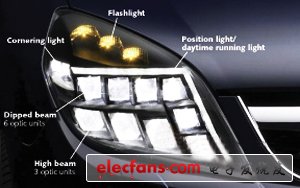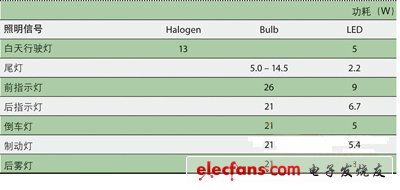As technology advances and develops, optics and photonics technologies are providing car manufacturers with an increasingly rich set of toolkits to help car manufacturers improve car safety, reduce long-term costs, increase efficiency, and add uniqueness to cars Design elements. In addition to the common LED taillights, some cars are also trying LED headlights. At the same time, optical fibers are also being used to connect communications and display devices in automobiles. It is reported that Ford is currently investigating and researching automotive laser ignition systems, while some other high-end cars will also provide night vision systems and driver assistance systems. LED taillights and headlights "Although the current cost of using LED solutions for car taillights and interior lighting is still much higher than the cost of incandescent lamps, the huge advantages of LED solutions are already sufficient for car manufacturers to accept their higher costs in development and manufacturing. "Professor Cornelius Neumann, who specializes in automotive lighting at the University Karlsruhe in Germany, said," In addition to the ultra-long service life of LEDs (the lifespan of which is usually longer than the life of a car), its fast response time is also a brake light An important safety factor, the response time of LEDs is usually about 75 milliseconds shorter than that of commonly used bulbs. In addition, the low power consumption and novel shape of LEDs are also the main reasons why manufacturers choose LEDs for automotive signals. " Professor Neumann and German automotive lighting and electronics supplier Hella have conducted in-depth research in the field of automotive lighting for 11 years. He said that although LED taillights are more common in cars, the use of LED headlights in cars faces more challenges. “So far, at least three models of cars on the market have adopted LED headlights: LS 600 from Lexus, Audi R8 and Escalade PlaTInum from Cadillac.†Professor Neumann said, “but LED solutions are fully used in headlights, there are still Many problems need to be solved. " Professor Neumann pointed out that dust, humidity, mechanical vibration and the harsh environment with a surrounding temperature of up to 90 ° C will bring certain challenges to LEDs, because the performance of LEDs will decrease with increasing temperature, so some high-power LEDs need to be equipped with cooling devices. Moreover, instead of using a single light source (such as a halogen lamp or a high-intensity discharge (HID) lamp), LED headlights need to assemble multiple LEDs together to meet the needs of driving signal lighting. In LED headlights, three different optical systems are usually used to achieve different functions. These three systems need to be firmly coordinated with each other to emit light with high enough brightness to meet the requirements of road traffic lighting. Although LED headlights still face many challenges, Professor Neumann added that LED solutions can save 50% or more of energy consumption compared to commonly used bulb solutions (see Table 1). According to some studies, less than 20% of LED light can achieve the same brightness as HID lamps, and LED lighting is safer. With the development of mathematical models and software algorithms, engineers can now design and produce various forms of mirrors and lenses to guide the light emitted from the light source to specific areas of the road surface (see Figure 1). Figure 1: The headlamps of Opel Signum cars all use LED solutions, which use different modules to achieve different signal functions: 6 groups of LEDs for low beam lights; bottom 3 groups of LEDs for high beam lights; two groups on the side Small LEDs are used for corner lights; 10 groups of LEDs are used for daytime running lights. The direction indicator light is composed of 3 groups of LEDs with a reflection system on the top of the headlight. Choose different LEDs according to the different uses of each signal light. Table 1: Comparison of traditional lighting methods and LED lighting power consumption. High-brightness LED manufacturers have every reason to believe that LEDs will penetrate the automotive sector in the future. Market research company Strategies Unlimited predicts that by 2013, the overall market size of global automotive LED outdoor lighting will grow from US $ 158 million in 2008 to US $ 347 million. According to "ResearchInChina" "Research InChina" 2008-2009 Global and China Automotive LED Lighting Industry Research Report shows that by 2014, LED headlights will cost and performance and traditional HID headlights (assuming LED Technology can continue to progress at the current rate of development) Comparable, by then, the application of LED in the automotive field will be greatly improved, the market size of automotive headlights alone will reach 122 million US dollars. Mouse Pad,Soft Sublimation Printed Mouse Pad,Die Cut Mouse Pad,Direct Custom Logo Cixi Mingsheng Rubber & Plastic Co.,Ltd. , https://www.popmat.com
